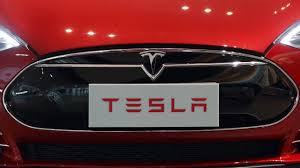Tesla Earnings Tank, Showing That Rising Sales Can Actually Be a Negative

There’s an old business joke about losing money on each sale but making it up in volume.
Tesla investors, however, are not laughing as shares immediately plunged more than 10% in after-hours trading. Automotive revenues of almost $ 5.4 billion for the second quarter were up 60% year over year and 40% over the first quarter (although that was a poor period for the company). But there was a non-GAAP earnings-per-share loss of $ 1.12. The average analyst estimate was $ 0.40. And the total company revenue, including auto sales, was $ 6.3 billion when the average analyst estimate was $ 6.4 billion.
While unit production and sales volumes climbed significantly over the last 18 months, according to a Fortune analysis of Tesla public data, the growth primarily came from a far less profitable unit of its business, the Model 3.
From one view, the numbers for the second quarter of 2019 look good. According to an Oppenheimer report from June 24, the consensus of analyst expectations on delivered cars was 89,300. The number that Tesla released on July 2 hit 95,200, an all-time record for the manufacturer. But, as the chart below shows, deliveries by quarter since the end of 2016 have formed a worrisome trend. The Model 3—with a base price of $ 38,990, versus the $ 79,990 for the Model S and $ 84,990 for the Model X—is by far the biggest source of sales.
And though production has ramped up overall, the gains are weighted heavily toward the Model 3.
And that creates problems. One reason the Model 3 is ascendent is price. More people can afford the less expensive version, and that opens doors to a larger market. In addition, Tesla started offering sales sweeteners in May. “They have reasonably compelling lease deals,” said Jeremy Aceveco, manager of industry analysis at auto information publisher Edmunds. “They’ve had leasing on their site, but they made the pricing a little bit more attractive.”
Then there’s model fatigue. The 3 is new. “The S has been around since 2012 and a lot of people who wanted one have gotten one,” said David Whiston, U.S. auto equity strategist for Morningstar Research Services. The X began to ship in late September 2015. Neither is the shiny new toy on the block.
“Contrary to what some think these are not iPhones,” Whiston said. “They are expensive cars.” In other words, anyone expecting a regular upgrade cycle (like with a consumer electronics product) is going to be disappointed.
“Given Musk has said there’s no new version of the S coming out this issue will be ongoing for a while,” Whiston said.
The result has been a significant shift, which brings with it the potential for a new fiscal dynamic. Sell cheaper cars and you make less revenue. At the same time, lower-priced models likely have lower profit margins, particularly when, like the 3, they share much of the same technology as the more expensive versions. The gross margin for the quarter’s auto sales was 18.9%. A year ago it was 20.6%—a big drop.
In the June report, Oppenheimer said it believed that Tesla was “likely selling higher-end Model 3s” with robust average sales prices and gross margins. Even so, as Aceveco said, “I think if you ask Tesla, they’d rather sell a Model S or X than a Model 3. Even achieving the scale [of sales] the Model 3 is achieving, there’s no secret that the cost of these vehicles is something Tesla is trying to keep in check and that the margins are pretty thin.”
There are also some more hidden cost pressures. One is the leasing program. According to Aceveco, Tesla has said that it won’t sell the cars to the lease customers (when their leases expire). Instead, it plans to create its fleet of autonomous robotaxis, which, it said during an April event, are supposed to be up and running in 2020. But that adds a lot of extra expenses and doesn’t recoup the capital investment in all those cars at a time that the company needs more cash.
Plus, there is growing electric vehicle competition from other higher-end brands like Audi, Jaguar, and Mercedes-Benz.
All in all, the road ahead looks busy—and bumpy.
More must-read stories from Fortune:
—Meet the A.I. landlord that’s building a single-family-home empire
—You might have longer than you think to invest for retirement
—Facebook’s Libra currency could threaten the global financial system
—The surprising way Republicans used to use immigration to boost the economy
—One of Warren Buffet’s favorite metrics is flashing red. Corporate profits are due for a hit
